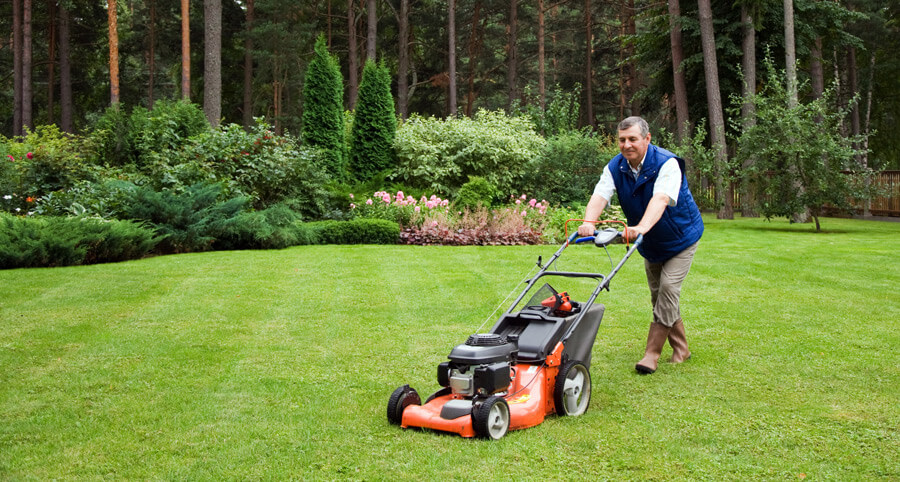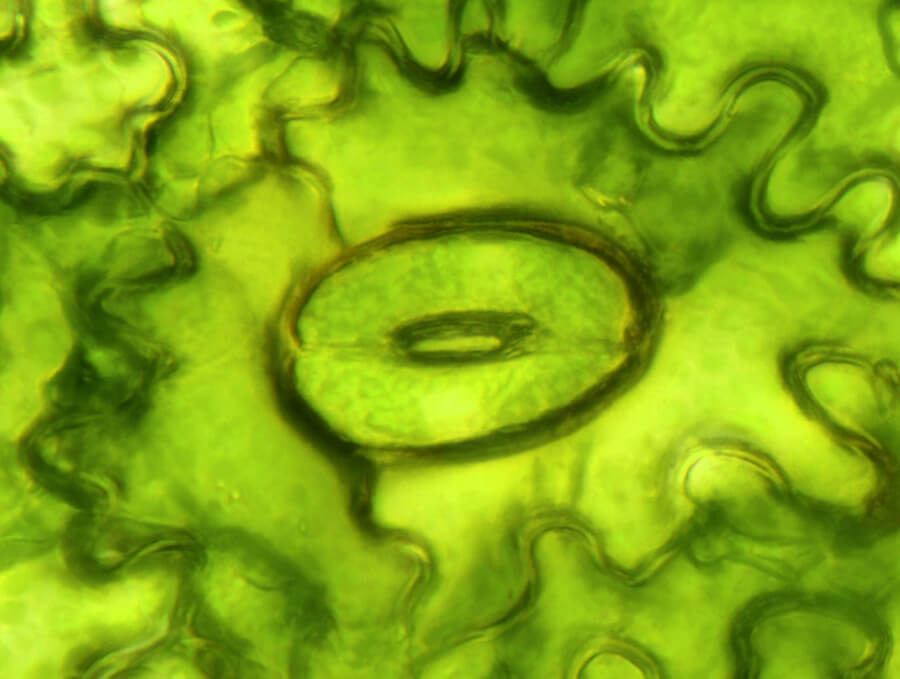Lawn care experts advise you to stick to the 1/3 rule when mowing your lawn. But what does that mean and why is it important. Robbie Lynn looks at the science behind the 1/3 rule.
What is the 1/3 rule?
When you mow an established lawn, you should never remove more than one third of the grass blade. So, if your lawn is 6cm long, one third of 6cm is 2cm, 6cm – 2cm = 4cm. You should set your mower blades at 4cm before you start off.
Don’t be tempted to let your lawn grow long and then suddenly mow it very short. That’s the way to weaken the grass plants and allow moss and weeds to infiltrate. It can also result in a pale, unevenly coloured patch of grass rather than a rich green, velvety carpet.
Let’s look at the science behind mowing your lawn…

How plants work
There are literally millions of grass plants on your lawn. Each one has a root system, a crown and, of course, leaves. The crown is the epicentre of the plant – the point where the leaves sprout from. The reason that we can mow our lawns without killing the plants (and that pasture grass can be repeatedly grazed) is that leaves grow from the crown at the bottom of the plant – broad leaved plants grow from the tips of their stems and branches.
The purpose of the leaves is not to look pretty, or even to shade the soil and protect it from moisture loss, although they do both of these things really well. No, leaves are there to make and store energy.
Grass is green because the cells contain a substance called chlorophyll. Chlorophyll is clever stuff. It enables the plant to carry out a process called photosynthesis, in which carbon dioxide from the air and water from the soil are combined to make carbohydrates (energy food) and oxygen
6CO2 (carbon dioxide) + 6H2O (water) + energy from sunlight → C6H12O6 (carbohydrate) + 6O2 (oxygen)
CO2 gas enters the leaf through miniscule holes in the surface called stomata. Those same stomata also release oxygen into the atmosphere for us to breathe. On hot days, a little bit of water vapour escapes with the oxygen. This is all part of the plant’s cooling system and it’s why a natural lawn is always a more comfortable temperature than hard landscaping surfaces.

A plant leaf under a microscope showing one of the stomata that allow gasses like CO2 and oxygen to flow in and out of the plant
The carbohydrate made through photosynthesis flows to every part of the plant via a system of tubes called the phloem system…..a bit like our arteries and veins. So food made in the leaves nourishes the roots and the crown of the plant and helps every part of it to grow and flourish.
How mowing affects plant metabolism
The amount of energy the plant can produce is directly related to the surface area of the leaf. So, when you remove the leaves through mowing, suddenly the vast network of roots and plant cells loses its supply of calories. You’re effectively putting the plant on a diet.
Now, if you’ve ever tried switching to a very low calorie diet, you’ll know that it’s a big shock to the system. Not only do you feel ravenously hungry, you feel weak, befuddled and generally unwell. Your immune system seems to weaken too – you’re more likely to catch a cold when you are undernourished.
On the other hand a “sensible” diet, where you only cut SOME of your calorie intake will maintain your health.
By sticking to the 1/3 rule for mowing your lawn, you are avoiding that extreme diet situation where the plants get weaker. Instead you are only reducing the plants’ calorie intake by a manageable amount.
What is the best mowing height for your lawn?
The best mowing height for any lawn depends on the grass species, the weather, where your lawn is growing and how you use and maintain it.
For a family lawn with a nice ryegrass seedmix, 4-5 cm is a good mowing height for most of the year. In warmer weather, plant metabolism speeds up and the plants need more energy to support themselves. If they can’t generate enough energy through their leaves, they’ll shut down and become dormant. In other words the leaves turn brown. That’s why it’s a good idea to raise the mowing height in summer to help keep your green.
For an ornamental lawn with mainly fescues and bent grasses, you can get away with maintaining your lawn a little shorter. 2-3 cm is sensible.
Whatever the “normal” height of your lawn, the 1/3 rule for mowing your lawn still applies.
The 1/3 rule and going on holiday
If you’re lucky enough to go away on your holidays for a couple of weeks, chances are you’ll come home to a long lawn. Don’t panic. Resist the temptation to take the mower out and scalp it.
Any lawn looks great provided that most of the leaves are the same length….it doesn’t matter what length. Picture for a moment a field of barley in the spring sunshine. It’s grass, most of the plants are knee height, but it looks fantastic.
Use the 1/3 rule to gradually reduce the height of the lawn. But give your lawn a couple of days to adjust between each mowing session. So if you come home to a 12cm lawn, bring that down to 8cm on day 1. 2-3 days later it will have grown a bit more, mow again to around 6 cm. Another 2-3 days later, you can reduce the height of the mower to about 4.5 cm and you’re nearly where you need to be.
The joy of the 1/3 rule
No matter how tempting it is to let your lawn grow long and then scalp it, remember this
- If you’re only taking the top off your lawn your mower will cope with wet grass
- The less grass you remove, the fewer clippings you’ll have to deal with
- Taking 1/3 off a relatively dry lawn means it’s OK to let the clippings fly – saving you the job of collecting them up
- A well cared for lawn is less likely to need time consuming and costly disease treatments
- Avoid stressing the grass and you’ll see less moss and fewer weeds in your lawn
For help and advice on any aspect of lawn care, follow the Premier Lawns YouTube Channel. We have a wealth of videos looking at everything from seeding a new lawn to renovating a tired lawn.
Click on the link to explore our video library and join our community of lawn lovers.

